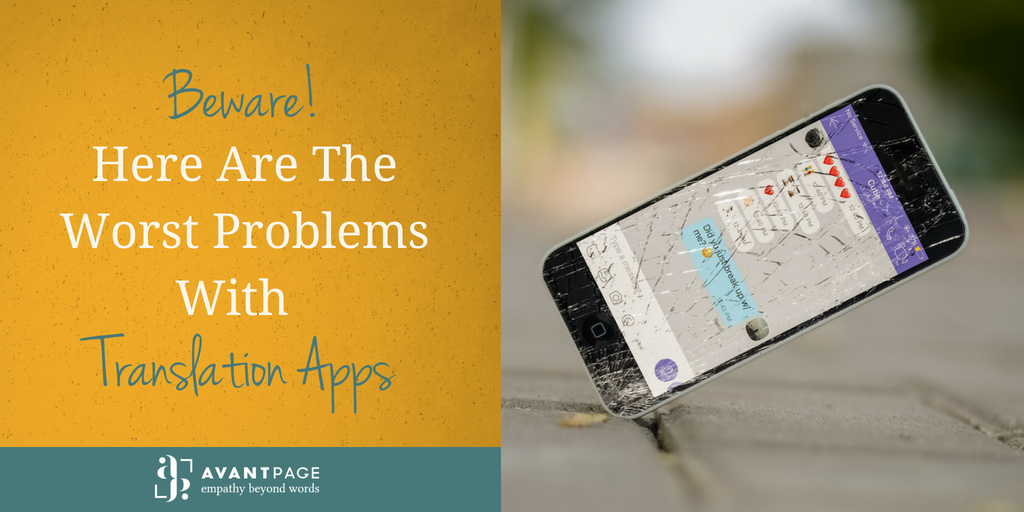At some point in your life, you may have used a translation app that used the web to translate words and phrases quickly. Some translation apps will translate the text in a photo. Some apps allow you to speak into your microphone and then will translate your message into your chosen language. Some are more simple and translate text based on what you input into the app.
The technology behind these applications is Machine Translation, also known as MT. While MT has come a long way since its inception, it’s still not perfect. In many cases, MT makes mistakes that human translators wouldn’t. Here are five reasons that translation apps aren’t effective at translating all different types of content.
Translation Apps + Context
Machine Translation can’t understand context. If you’re speaking to another person, he or she can understand what words you’re replacing with pronouns, whereas MT is not yet able to do that. Similarly, people can understand what you mean when you say things like “Yes, but no. I mean, yes and no…I don’t know it’s really complicated.” That’s a very complicated series of sentences that are all related to one another. A piece of technology is not likely to realize that these statements are all connected, or that you’re talking about a subject that isn’t in these sentences.
Translation Apps + Accuracy
Translation apps aren’t known for producing high-quality translations. Many translation apps request user feedback to create better translations, but users submit many different ways to translate the same content. Again, what’s missing is context. To have an accurate, high-quality translation, you need to know why the document is being translated and to whom the materials will be delivered. Translation apps, even with user-submitted translations, cannot determine the context of your document. As a result, using a translation app will prevent you from having a high-quality translation of your document.
Translation Apps + Confidentiality
Part of finding the right Language Service Provider (LSP) is making sure it can keep your confidential data safe. LSP’s host their servers in secure data centers, and have procedures to ensure protected information is encrypted. Translation apps don’t provide this level of safety. These apps often store data after you submit it. If you’re translating information that is confidential in any manner, you should use a human translator to ensure the information stays protected.
Translation Apps + Editing
If you think you can use a translation app and have your LSP edit and proof the text afterward to save money, you may be surprised. The inaccurate translations provided by translation apps can take more time and can be more expensive to edit than translating the original text. While it may seem beneficial to provide pre-translated text, if it isn’t a quality pre-translation, it will take more time and money to determine what the translation should say. The best way to keep your budget low and keep your translation project on-time is to use human translators, and avoid pre-translating your text.
Translation Apps + Inaccuracies
Machine Translation is still being researched and improved, and therefore it still experiences inaccuracies. If you don’t know the language you’re translating to, you may end up with a translation fail rather than a usable message. Your consumers won’t receive or discuss your message if it’s inaccurately translated— all they’ll be talking about is the poor translation.
If you want high-quality, confidential, accurate translations—translation apps won’t work for you. You need a dedicated LSP to ensure that your translations give you everything you need. If you’re interested in learning more about using an LSP, call us today at (530) 750-2040, or request a free quote.
GET VALUABLE CONTENT DELIVERED STRAIGHT TO YOUR INBOX. SIGN UP FOR OUR NEWSLETTER TODAY!

Ash is the Marketing Coordinator at Avantpage, Inc. Ash works to create high-value, targeted content that allows consumers to connect with us at Avantpage. They are a strong proponent of everyone having equal access to communication and information. They have written and created content for a variety of online platforms, and have been published in over 30 online platforms with varying topics. But Ash is other things too! An avid athlete, Ash enjoys spending their free time rock climbing, partaking in aerial circus sports, and practicing acroyoga.
